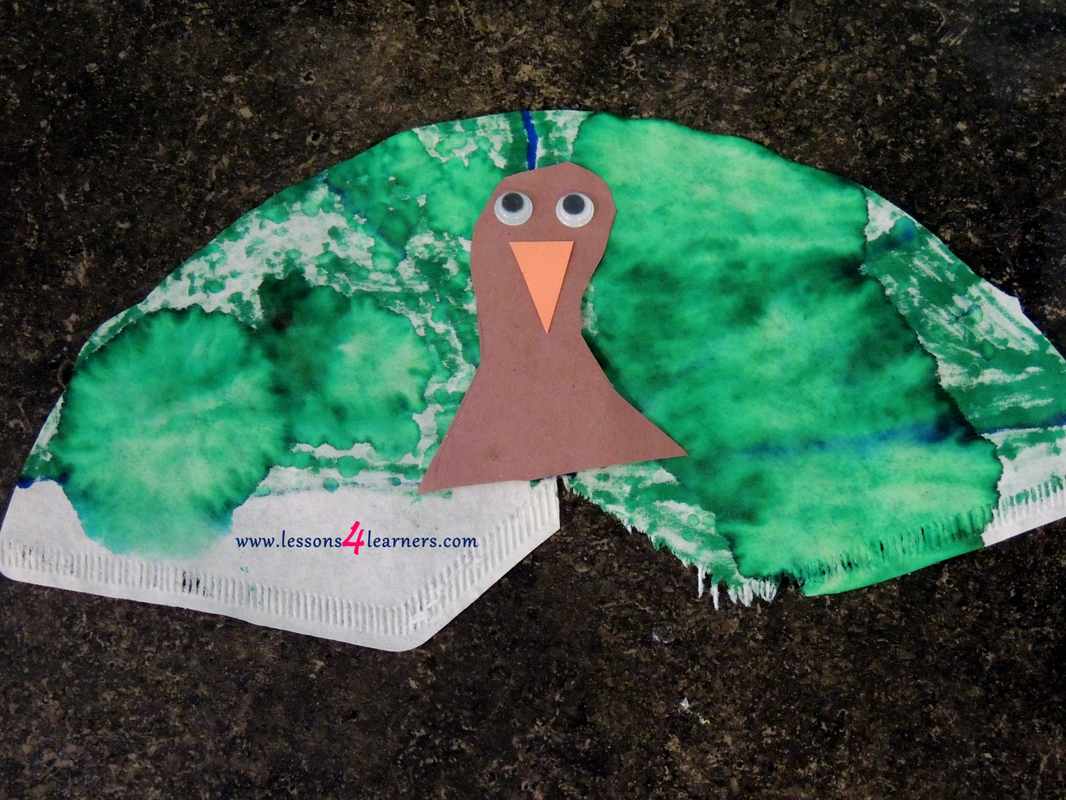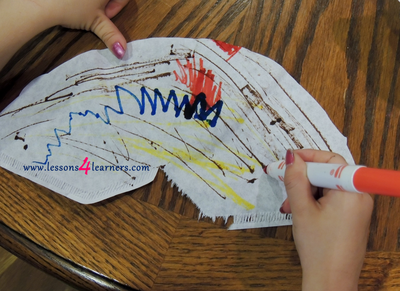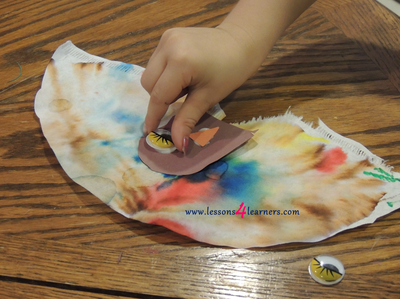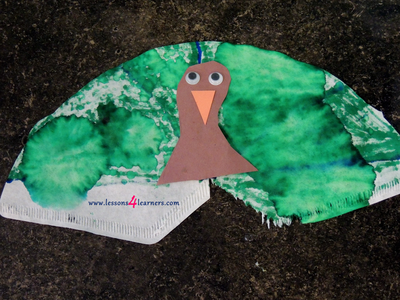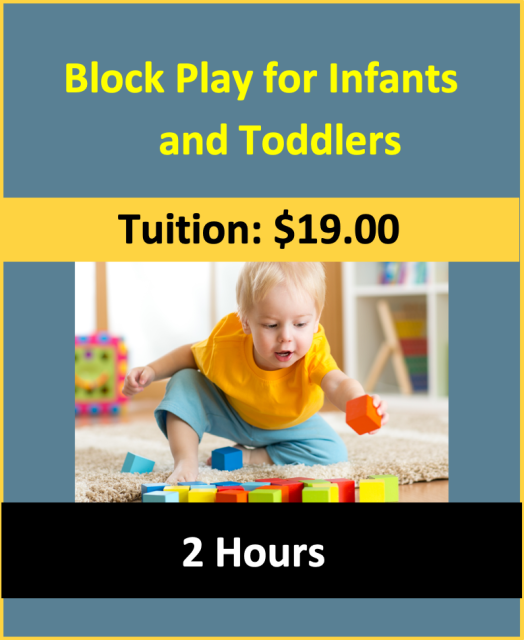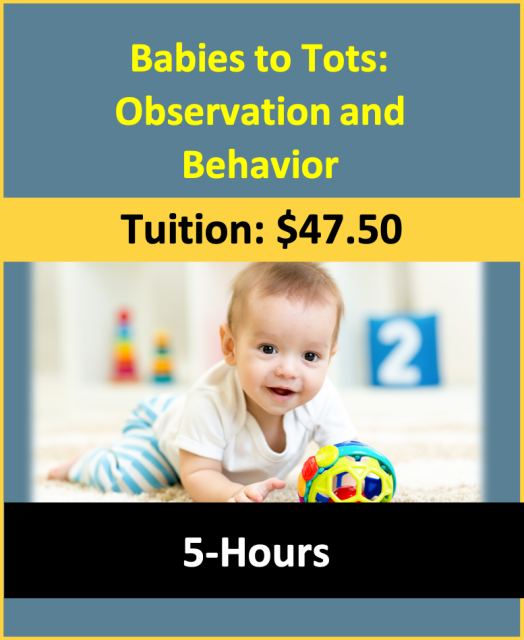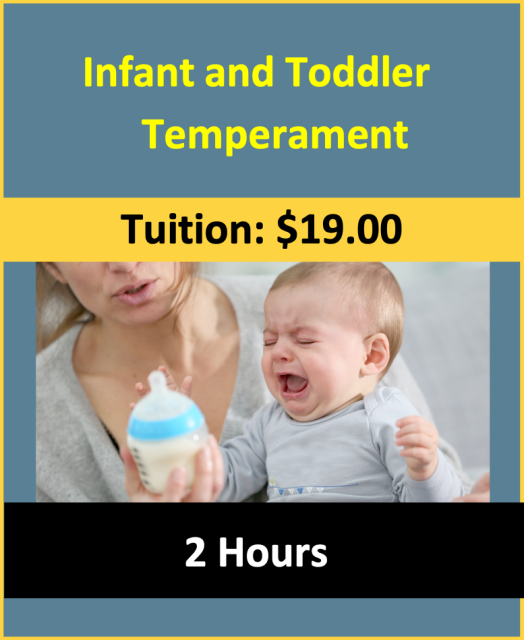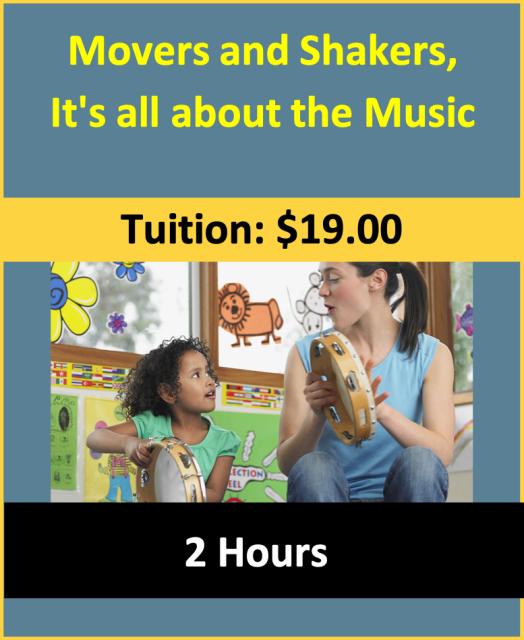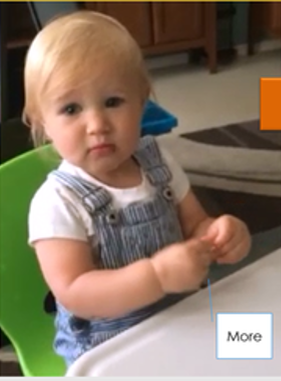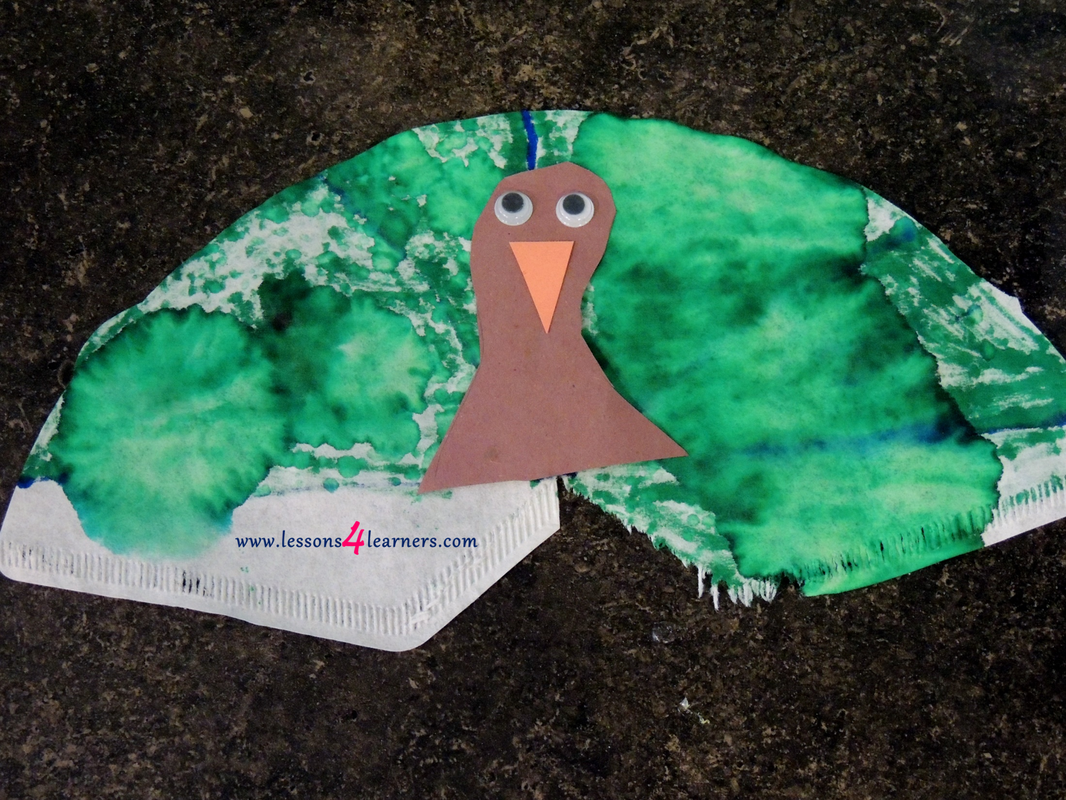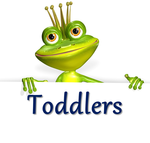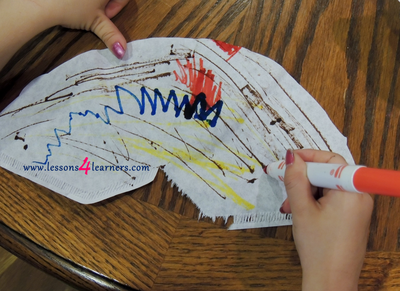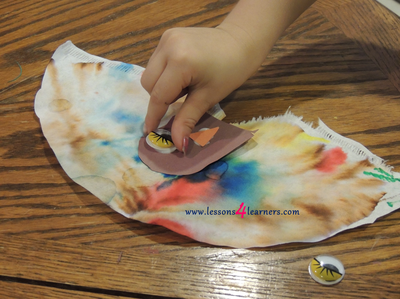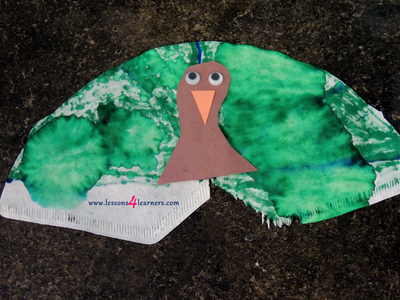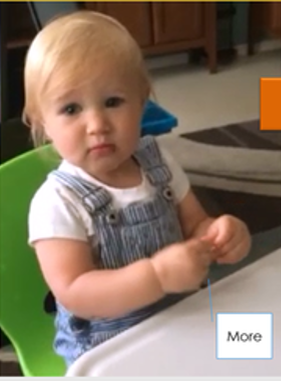Coffee Filter Turkeys
Lesson Plan:
|
Activity:
Coffee Filter Turkeys
Lesson plan developed by Ms. Erika Geelhoed, BA Ed
Age Group:
* Lesson plan objective and assessment can be adapted to use this activity with preschoolers.
Objectives:
Children will:
|
|
II.7.4a
Materials:
|
Procedure:
- Invite the children to color on the coffee filters using the markers.
- When finished, help the children lightly spray the colored filter with the spray bottle.
- Allow the filter to dry.
- Cut out a body and beak for the turkey using construction paper and glue to the filter.
- Glue on googley eyes.
- Display the turkeys for the children to see.
Assessment:
- Observe and record the children’s fine motor skills. How well were they able to control the marker?
Note: Please provide appropriate supervision to the children in your care when completing all activities. You will need to decide what types of activities are safe for the children in your care. Appropriate and reasonable caution should be used when providing art and sensory experiences for children. Toddlers require special caution, only use non-toxic materials, and do not allow toddlers to put things in their mouths that are a choking hazard.
Click on the course icon for enrollment information.
Sign Language for Babies and Toddlers
|
Babies begin to mimic what they see from a very early age, often cooing as part of an exchange with a caregiver long before they are able to communicate linguistically. This is why babies typically begin signing back earlier than they begin speaking. When introducing sign language to babies, it is important to sign and speak with them at the same time. For example, when signing “more” to an infant who may want more food, it is advisable to say, “Do you want more?” While signing the word more.
For older infants, who have not had previous sign language exposure, it is fine to start with the recommended signs for the younger age range. Chances are that they will be able to pick up the signs quickly and continue learning new ones as they are introduced. As long as the signs are taught in context and are signed often, the child will benefit from them. Toddler signs become more specific to their feelings and important components of their daily lives. Toddlers are at an age where they are becoming aware of themselves, their feelings, needs, and the labels or names associated with their world. This is why signs such as happy, Aunt, friend, and bathroom are commonly taught to this age group. Video: Recommended Signs for Babies and Toddlers |
Member Login  Hi, (First Name)
Hi, (First Name)  | Log Out
My Profile
Not a member? Sign up.
Log Out
| Log Out
My Profile
Not a member? Sign up.
Log Out
Member Login
Welcome, (First Name)!
Enter Member Area
(Message automatically replaces this text)
OK
Feel free to browse the pages, and watch us expand our wealth of resources! Registration is free for 6 months!
Coffee Filter Turkeys
Click on the photos to enlarge.
|
Online Courses
Early Literacy
(1 hour / .1 CEU) Tuition: $10.50 Stages of Cognitive Development in Infants (1 hour / .1 CEU) Tuition: $10.50 |
Sign Language for Babies and Toddlers
|
Babies begin to mimic what they see from a very early age, often cooing as part of an exchange with a caregiver long before they are able to communicate linguistically. This is why babies typically begin signing back earlier than they begin speaking. When introducing sign language to babies, it is important to sign and speak with them at the same time. For example, when signing “more” to an infant who may want more food, it is advisable to say, “Do you want more?” While signing the word more.
For older infants, who have not had previous sign language exposure, it is fine to start with the recommended signs for the younger age range. Chances are that they will be able to pick up the signs quickly and continue learning new ones as they are introduced. As long as the signs are taught in context and are signed often, the child will benefit from them. Toddler signs become more specific to their feelings and important components of their daily lives. Toddlers are at an age where they are becoming aware of themselves, their feelings, needs, and the labels or names associated with their world. This is why signs such as happy, Aunt, friend, and bathroom are commonly taught to this age group. Video: Recommended Signs for Babies and Toddlers |
